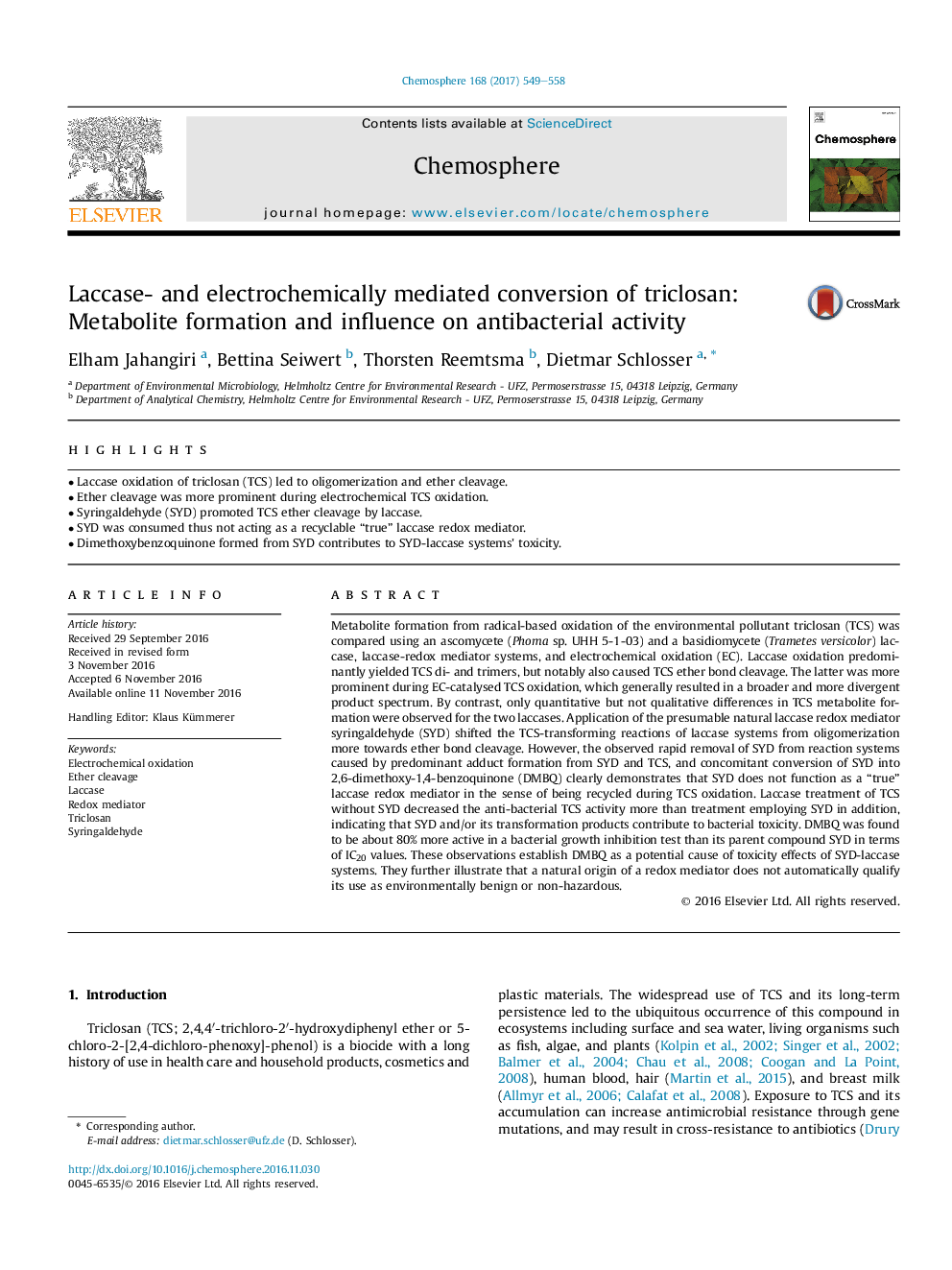| کد مقاله | کد نشریه | سال انتشار | مقاله انگلیسی | نسخه تمام متن |
|---|---|---|---|---|
| 5746604 | 1618803 | 2017 | 10 صفحه PDF | دانلود رایگان |
- Laccase oxidation of triclosan (TCS) led to oligomerization and ether cleavage.
- Ether cleavage was more prominent during electrochemical TCS oxidation.
- Syringaldehyde (SYD) promoted TCS ether cleavage by laccase.
- SYD was consumed thus not acting as a recyclable “true” laccase redox mediator.
- Dimethoxybenzoquinone formed from SYD contributes to SYD-laccase systems' toxicity.
Metabolite formation from radical-based oxidation of the environmental pollutant triclosan (TCS) was compared using an ascomycete (Phoma sp. UHH 5-1-03) and a basidiomycete (Trametes versicolor) laccase, laccase-redox mediator systems, and electrochemical oxidation (EC). Laccase oxidation predominantly yielded TCS di- and trimers, but notably also caused TCS ether bond cleavage. The latter was more prominent during EC-catalysed TCS oxidation, which generally resulted in a broader and more divergent product spectrum. By contrast, only quantitative but not qualitative differences in TCS metabolite formation were observed for the two laccases. Application of the presumable natural laccase redox mediator syringaldehyde (SYD) shifted the TCS-transforming reactions of laccase systems from oligomerization more towards ether bond cleavage. However, the observed rapid removal of SYD from reaction systems caused by predominant adduct formation from SYD and TCS, and concomitant conversion of SYD into 2,6-dimethoxy-1,4-benzoquinone (DMBQ) clearly demonstrates that SYD does not function as a “true” laccase redox mediator in the sense of being recycled during TCS oxidation. Laccase treatment of TCS without SYD decreased the anti-bacterial TCS activity more than treatment employing SYD in addition, indicating that SYD and/or its transformation products contribute to bacterial toxicity. DMBQ was found to be about 80% more active in a bacterial growth inhibition test than its parent compound SYD in terms of IC20 values. These observations establish DMBQ as a potential cause of toxicity effects of SYD-laccase systems. They further illustrate that a natural origin of a redox mediator does not automatically qualify its use as environmentally benign or non-hazardous.
Journal: Chemosphere - Volume 168, February 2017, Pages 549-558
